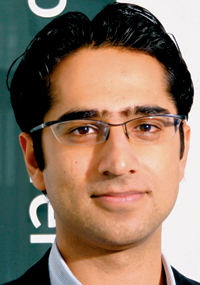Aiming to provoke a new debate on how we value the arts, Hasan Bakhshi, Alan Freeman and Graham Hitchen believe that cultural economics provides us with an important new way of thinking.



The stand-up comedian George Carlin introduced US audiences to the word ‘oxymoron’ by ridiculing the idea of Military Intelligence. To many in the arts sector, ‘Cultural Economics’ is equally self-contradictory. A decade of economic impact studies has led them to conclude that economists are natural enemies of the arts. Think again: the first person to secure permanent public support for the arts was John Maynard Keynes, founder of the Arts Council. Our paper on intrinsic valuation, published by Mission Models Money, makes the case that the arts and economics are natural allies.
In Britain in recent years, both these sectors have ignored a long-standing tradition of the “economic approach to culture” – as Swiss economist Bruno Frey terms it – stretching back to John Ruskin’s contributions to nineteenth-century debates on the theory of value. The tradition is gathering dust in the UK because, in reaction to a perceived over-emphasis on instrumental target-setting, and in making the case for the intrinsic value, the arts sector has been sidetracked into denying that this can itself be measured.
Yardsticks
Sir Brian McMaster’s report on excellence in the arts exemplifies this dichotomy. It bemoans the tendency “to take decisions based on meeting quantifiable targets (such as filling seats) at the expense of less easily measurable but equally important outcomes such as excellence, innovation and risk-taking”. But excellence itself is a measure. Of course, not everything the arts do is measurable, but their value to society is. A growing body of respected work offers rigorous, testable estimates of the value the public places on the arts. Whenever such estimates have entered the policy-making arena, the arts have been able to speak for themselves without being judged by the standards of others.
Research is required to develop and apply the relevant techniques – from which arts providers, funders and policy makers all stand to gain. As early as 1982, research by cultural economists David Throsby and Glenn Withers,1 using Willingness to Pay methods, showed that the Australian taxpaying public sets a higher value on the arts than the public funders are willing to pay for. Economists, intrigued by the paradox presented by such studies, conclude that art confers benefits for society that go beyond personal gratification: ‘existence benefits’, people take pride in having theatres, opera houses, galleries, music venues and cinemas whether or not they visit them; ‘bequest benefits’ arise because people want to know that their families will enjoy what they leave behind; ‘option value’ is vital to understanding the value of diversity, and explains why people want to be able to choose between artistic activities – including those they haven’t yet taken part in.
Beyond accounting?
Understanding has been hampered because arts spokespeople are unhappy with the apparently philistine imposition of instrumental standards, obliging arts bodies to quantify employment, wealth, crime reduction or attendance, instead of focusing on what art itself actually does. This has led to a perception that the error lies in the very attempt to quantify what the arts do, rather than valuing the arts in and for themselves. There is, however, a contradiction between the plea that the intrinsic value of art is paramount, and the idea that it is beyond accounting. If art really is beyond valuation there is no point complaining that it has been valued improperly. A more constructive engagement would seek to engage with the debate and to develop measures that more accurately reflect what the arts community knows that art can contribute to society. Better measures are needed, not no measures at all.
This would place the arts at the centre of the public choice debate. Although cutbacks are likely over coming years, Government – and the public – do not face a choice between spending on the arts or not spending. Rather, they choose between the arts and other things. Whether we like it or not, much policy making consists in allocating funds to alternative expenditures. The same pound cannot be spent twice. Choosing between two objectives forces any decision maker to construct common criteria. If we could have as many hospitals as we wanted, and at the same time as many orchestras, art galleries or theatres, there would not be any need to assess which was ‘better’ or ‘worse’, because we could have all of them.
Ticker tape
No one could dispute that the benefits of different types of public spending are different. Health, education and defence satisfy distinct requirements. So do the arts. The question is: are these differences so fundamental that there is no basis for comparison? Cultural economics shows that there is such a basis, which does not neglect the distinctive contribution of the arts but corrects a previous underestimation. The aim of cultural economists is to improve and refine their methodology, so that it more accurately captures the value of the arts. If it is not doing that well enough then the dialogue needs to be enhanced.
Cultural economics is not just for the box tickers, nor another advocacy ploy. It is a serious body of research with professional techniques that have to be properly applied. If done properly, these open the way to a new terrain of discourse between users, providers and beneficiaries of public funding for the arts, with a genuine and informed discussion about what the public actually gets from, and values in, the arts.
Aesthetic value
The results of this discourse have strengthened the confidence, understanding and political clout of the arts sector. The potential is even greater: the case for artistic influence in decision making stretches into the sphere of apparently non-artistic decisions – not by exempting the arts from decision making but by applying artistic criteria on a far wider basis. If artistic or aesthetic value is a suitable criterion on which to judge the arts, why should it not also apply throughout society? Are we indifferent to whether our hospitals are concrete monstrosities? Should not our children’s sense of the worth of art be encouraged at every step, so that aesthetic accomplishment is once again conceived, as Keynes desired, not as a distraction from production but as its highest objective?
Special pleading for ‘arts exemption’ undermines the true case for the arts: that they should not be treated as the exclusive preserve of the few but the inheritance of all, neither separate from, nor inferior to, health, education or social care. The reluctance to use rigorous economic methods to attempt this has hindered rather than helped the cause of the arts. It is time to abandon the outdated and poorly informed prejudices that lie behind this reluctance, and help develop a more sophisticated economic debate.
Hasan Bakhshi is an economist and Research Director for the Arts at NESTA, and Visiting Professor at City University. Alan Freeman is a Visiting Professor with the University of Manitoba and an economist at the Greater London Authority. Graham Hitchen is an independent consultant.
‘How to stop worrying and love economics’, by Hasan Bakhshi, Alan Freeman and Graham Hitchen, is available at http://www.missionmodelsmoney.org.uk
The views in this article do not represent the views of any of the institutions with which the authors work.
1 Throsby and Withers, ‘What price culture?’, the Policy and Planning Division of the Australia Council, 1984



